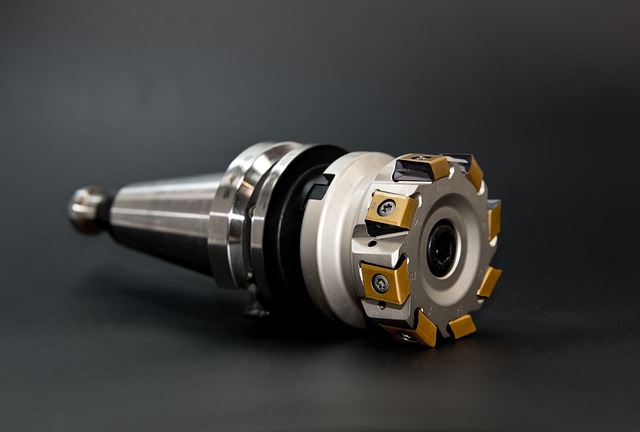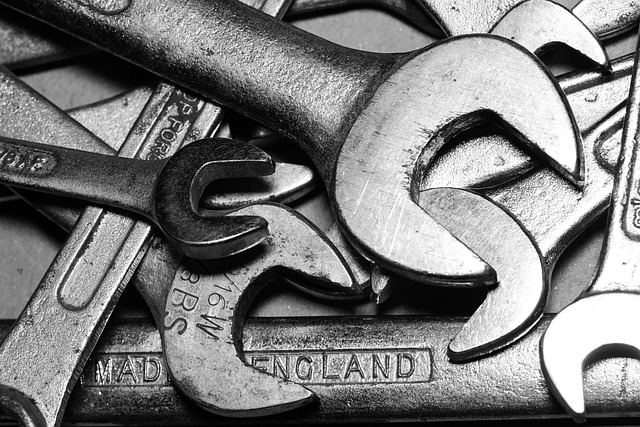Customer Repair Education: Empowering Users, Optimizing Digital Services
In today's digital age, customer repair education is revolutionizing the automotive industry. B…….
In an era where products are increasingly complex and technology is ever-evolving, the concept of customer repair education has gained significant traction. This comprehensive guide aims to explore every facet of this transformative educational approach, empowering consumers with the skills and knowledge to navigate the modern repair landscape. We will delve into its definition, historical evolution, global reach, economic implications, technological integration, policy framework, challenges, success stories, and future prospects. By the end, readers will grasp why customer repair education is not just a niche topic but a vital movement shaping consumer rights, sustainability, and economic resilience.
Definition: Customer repair education (CRE) is an educational initiative designed to equip consumers with the understanding and skills necessary to repair, maintain, and troubleshoot various products independently. It promotes self-reliance, empowers individuals to make informed decisions, and fosters a culture of sustainability by reducing electronic waste.
Core Components:
Product Knowledge: CRE involves teaching participants about different product types, their internal workings, and common repair challenges. This includes an understanding of mechanical, electrical, digital, and software systems in various appliances, electronics, and vehicles.
Hands-on Training: Practical workshops and demonstrations are integral to CRE. Participants learn through doing, gaining experience with basic tools, safety measures, disassembly, reassembly, and troubleshooting techniques specific to different product categories.
Repair Resources: This includes providing access to repair manuals, online tutorials, community forums, and a network of certified repair professionals. Such resources enable individuals to continue learning, troubleshoot complex issues, and make informed choices when opting for professional assistance.
Sustainability Awareness: CRE emphasizes the environmental impact of discarding functional products. It educates consumers on e-waste reduction, recycling, upcycling, and the economic benefits of repairing versus replacing, contributing to a more sustainable future.
Historical Context: The concept of consumer education has been around for decades, but CRE emerged as a distinct movement in response to increasing product complexity and growing concerns over electronic waste. In the 1970s, early efforts focused on simple repair tasks for common household appliances. However, with the rapid advancement of technology, especially in electronics and software, the need for more comprehensive training became evident. The late 20th century saw a surge in CRE initiatives globally, driven by environmental awareness, consumer rights movements, and government policies promoting technical literacy.
Customer repair education has left its mark across continents, with distinct regional variations and unique cultural adaptations.
Europe: The European Union’s emphasis on circular economy principles has fueled CRE initiatives. Countries like Germany and the Netherlands have long-standing traditions of technical education, which have been leveraged to promote local repair cultures. For instance, ‘Repair Cafés’ have gained popularity across Europe, offering free workshops and community support for repairing various items, from electronics to furniture.
North America: In the US and Canada, CRE has been driven by a combination of consumer advocacy, environmental concerns, and government incentives. Organizations like Repair.org and iFixit provide online resources and communities, while local repair events and workshops are becoming increasingly common. The ‘Right to Repair’ movement, advocated for by groups like the Public Knowledge Project, pushes for policies that ensure consumers can access repair information and replace parts independently.
Asia: Japan’s long-standing ‘Do-It-Yourself’ (DIY) culture has contributed to a robust CRE scene, with numerous online forums and local repair shops catering to a wide range of products. China, too, has witnessed a surge in CRE, driven by its massive manufacturing sector and growing e-commerce market. In India, non-profit organizations are pioneering community-based repair programs, addressing both product maintenance and digital literacy.
Emerging Markets: Africa and Latin America are witnessing increasing interest in CRE, often driven by local entrepreneurs and NGOs. Mobile phone repair, being a significant service industry in these regions, is a key focus, with training programs ensuring youth employment and improved access to technology.
The economic implications of customer repair education are far-reaching, influencing various sectors and stakeholders.
Market Dynamics: CRE alters the market equilibrium by empowering consumers to make informed purchasing decisions. Well-informed consumers may opt for more durable products, negotiate prices based on repairability, or choose second-hand items over new ones. This shift can impact manufacturer strategies, retail models, and the demand for specific product categories.
Investment Patterns: Governments and private entities are recognizing the potential economic benefits of CRE. Investments in training programs, repair infrastructure, and online resources are on the rise. These investments not only create job opportunities but also stimulate local economies, especially in regions with thriving manufacturing or tech industries.
Consumer Spending: Research suggests that consumers who receive CRE tend to spend less on unnecessary repairs and replacements. They become more mindful of their purchases, extending product lifespans and reducing overall consumption. This behavior can lead to significant savings for individuals and families over time.
Wage Employment: The repair sector itself is a substantial employer worldwide. As CRE becomes more widespread, the demand for skilled technicians, repair shop owners, and online support staff is expected to grow. This creates job opportunities, particularly in rural or underserved areas, where local repair businesses can thrive.
Technology plays a pivotal role in customer repair education’s evolution, enhancing both learning experiences and repair capabilities.
Online Resources: The internet has revolutionized CRE by providing access to an unprecedented amount of information. Online forums, video tutorials, and interactive platforms enable learners to gain knowledge at their own pace. Websites like iFixit, with its extensive library of repair guides, have become go-to resources for CRE enthusiasts worldwide.
Digital Tools: Advanced digital tools are making repairs more accessible. For instance, 3D printing technology allows for the creation of custom parts, while augmented reality (AR) applications can guide users through complex disassembly processes. These tools empower individuals to tackle a broader range of repair tasks with increased confidence.
Internet of Things (IoT): The rise of IoT presents both challenges and opportunities for CRE. On one hand, smart devices often require specialized knowledge for repair or upgrading. On the other, IoT can facilitate remote troubleshooting and diagnostics, making repairs more efficient. As IoT becomes more pervasive, CRE programs will need to adapt to address these new complexities.
Artificial Intelligence (AI): AI has the potential to revolutionize CRE by providing personalized learning experiences. Adaptive learning platforms can tailor content based on individual progress and needs. Additionally, AI-powered virtual assistants can offer real-time support during repair processes, enhancing problem-solving capabilities.
Government policies and regulations significantly influence the implementation and impact of customer repair education.
Right to Repair Laws: Several countries have enacted ‘Right to Repair’ legislation, mandating that manufacturers provide access to repair information, tools, and replacement parts for their products. These laws encourage competition in the repair sector and empower consumers to maintain their own belongings. For instance, California’s AB 1245 is a landmark law ensuring consumer access to repair manuals and parts for major appliances, electronics, and vehicles.
Warranty and Return Policies: Retailers’ policies regarding warranties, returns, and exchanges can either support or hinder CRE. Clear and consumer-friendly policies that allow for product disassembly and independent repairs can encourage a culture of self-reliance. Some manufacturers are even offering extended warranties if consumers prove they have performed basic maintenance and repairs.
Environmental Regulations: Environmental protection laws often align with the goals of CRE, promoting sustainable practices. Extended producer responsibility (EPR) policies require manufacturers to take back and recycle their products, ensuring e-waste is handled responsibly. These regulations create incentives for manufacturers to design products that are easier to repair and recycle.
Data Privacy and Security: As digital devices become more prevalent, data privacy and security concerns arise, especially regarding smart home appliances and IoT devices. CRE programs must address these issues, educating consumers on secure practices, encryption methods, and data protection regulations like GDPR in Europe or CCPA in California.
Despite its numerous benefits, customer repair education faces challenges and criticisms that require thoughtful strategies for resolution.
Initial Training Costs: One of the primary obstacles is the upfront investment required to set up CRE programs. Workshops, tools, manuals, and online resources demand significant financial resources. Governments and private organizations must collaborate to provide funding or subsidies, especially for community-based initiatives.
Lack of Awareness: Many consumers remain unaware of the benefits of CRE, assuming that products are designed to be inaccessible for repair. Raising awareness through public campaigns, educational events, and partnerships with retailers can help change this perception.
Technical Complexity: As technology advances, so do the complexities of repairing modern devices. Keeping up with these advancements is a constant challenge for CRE educators. Continuous training and collaboration with industry experts are essential to stay relevant.
Manufacturer Resistance: Some manufacturers oppose ‘Right to Repair’ laws, fearing potential liability issues and reduced control over product lifecycles. Open-source hardware design and modular product architecture can mitigate these concerns, fostering industry cooperation.
Initiated in the Netherlands, the Repair Café concept has spread across Europe and beyond. These community-based events bring together volunteers with diverse technical skills and consumers seeking to repair their broken items. From electronics and small appliances to furniture and bicycles, volunteers offer free repairs, providing a social space for learning and connection. The movement promotes sustainability, fosters technical literacy, and strengthens community bonds.
iFixit, a non-profit organization, has created an extensive online repair manual and community forum. Their website offers step-by-step guides for repairing a vast array of products, from smartphones to computers. The community aspect allows users to share tips, ask questions, and collaborate on complex repairs. iFixit’s mission is to make technology repairable, ensuring that consumers have the knowledge and resources to maintain their devices.
In major North American cities like New York and Los Angeles, non-profit organizations are establishing community repair centers. These hubs provide access to repair workshops, training programs, and low-cost or free repairs for underserved communities. By partnering with local businesses and manufacturers, these initiatives promote sustainable practices, digital literacy, and job skills development.
The future of customer repair education is filled with promising possibilities as technology advances and global awareness of sustainability grows.
Emerging Technologies: The integration of advanced technologies like virtual reality (VR) and mixed reality (MR) could revolutionize CRE training. VR workshops can simulate complex repair scenarios, allowing learners to gain hands-on experience in a safe, controlled environment. MR could enhance real-world repairs by providing digital overlays for assembly instructions or troubleshooting guides.
Sustainable Focus: As the world grapples with environmental challenges, CRE will continue to play a pivotal role in promoting sustainability. Future programs may emphasize eco-friendly product design, recycling techniques, and the circular economy model, encouraging manufacturers to create products that are easily repairable, upgradable, and recyclable.
Global Collaboration: With increasing globalization, collaboration between countries and regions is likely to intensify. Sharing best practices, resources, and success stories will help tailor CRE programs to diverse cultural contexts while ensuring global standards.
Policy Evolution: Government policies will continue to shape the repair landscape. Future laws may include provisions for digital rights, data security, and product transparency, further empowering consumers and fostering a more robust repair ecosystem.
Customer repair education is not just a passing trend but a critical component of our evolving global landscape. It empowers individuals to take control of their lives, makes communities more resilient, and contributes to a sustainable future. As technology continues to shape our world, the ability to understand, maintain, and repair products will become an increasingly valuable skill.
Through its various initiatives, CRE promotes technical literacy, fosters innovation, and drives economic growth. It encourages a culture of sustainability, reducing electronic waste and promoting responsible consumption. As we look ahead, the potential for CRE to shape policy, influence consumer behavior, and create new business opportunities is immense.
By embracing customer repair education, we embark on a journey towards a more informed, resilient, and sustainable world. It is a collective effort that requires collaboration between consumers, educators, manufacturers, policymakers, and technologists. Together, we can unlock the full potential of this transformative educational approach.
Q: Why should I learn to repair my own products?
A: Learning to repair your products saves money, reduces electronic waste, and empowers you to maintain your belongings. It also provides valuable skills and can be a rewarding hobby.
Q: Can anyone learn customer repair education?
A: Absolutely! CRE is designed for people of all ages and technical backgrounds. Workshops and online resources cater to beginners and advanced learners alike.
Q: How do I find local repair events or workshops?
A: Many communities have local repair groups or organizations that host workshops and events. You can check online forums, social media groups, or community centers for listings. Websites like Repair.org and iFixit also provide resources for finding local repair opportunities.
Q: What if I’m not technically inclined?
A: No technical background is required to benefit from CRE. Many basic repairs are straightforward and can be learned through simple guides and hands-on practice. Online communities and forums offer support, and you’ll often find others eager to help.
Q: How does CRE impact the environment?
A: CRE promotes sustainability by reducing e-waste, encouraging product repair and reuse, and fostering a circular economy. It empowers individuals to make environmentally conscious decisions about their purchases and disposal practices.

Specialized customer repair education is a powerful tool for enhancing automotive business success……..

Technological advancements are dramatically transforming customer repair education in the modern dig…….

For effective customer repair education, understanding audience needs is key. Segmenting customers a…….

Specialized customer repair education for staff significantly improves client satisfaction and build…….

Customer repair education is revolutionizing the auto industry by empowering individuals with knowle…….

Customer repair education is a strategic approach to enhance auto repair transparency and client sat…….

Video tutorials revolutionize customer repair education by offering engaging, interactive step-by-st…….

Automotive shops are leveraging technology and personalized approaches in customer repair education…….

Technology is transforming customer repair education through online platforms, interactive tools, vi…….